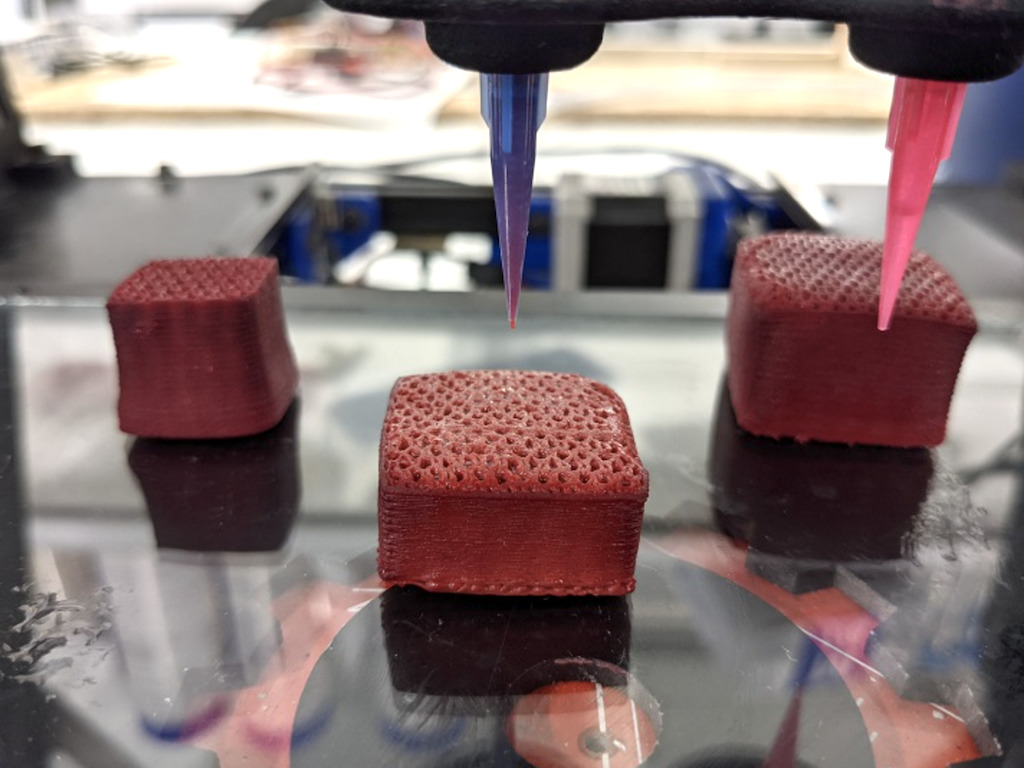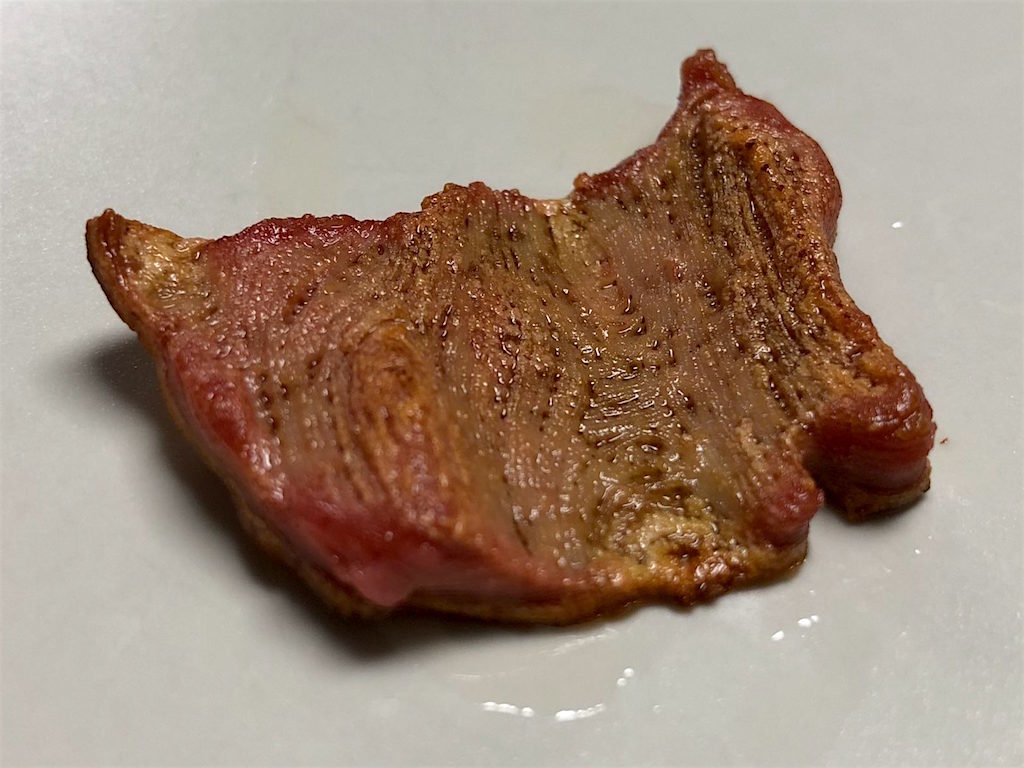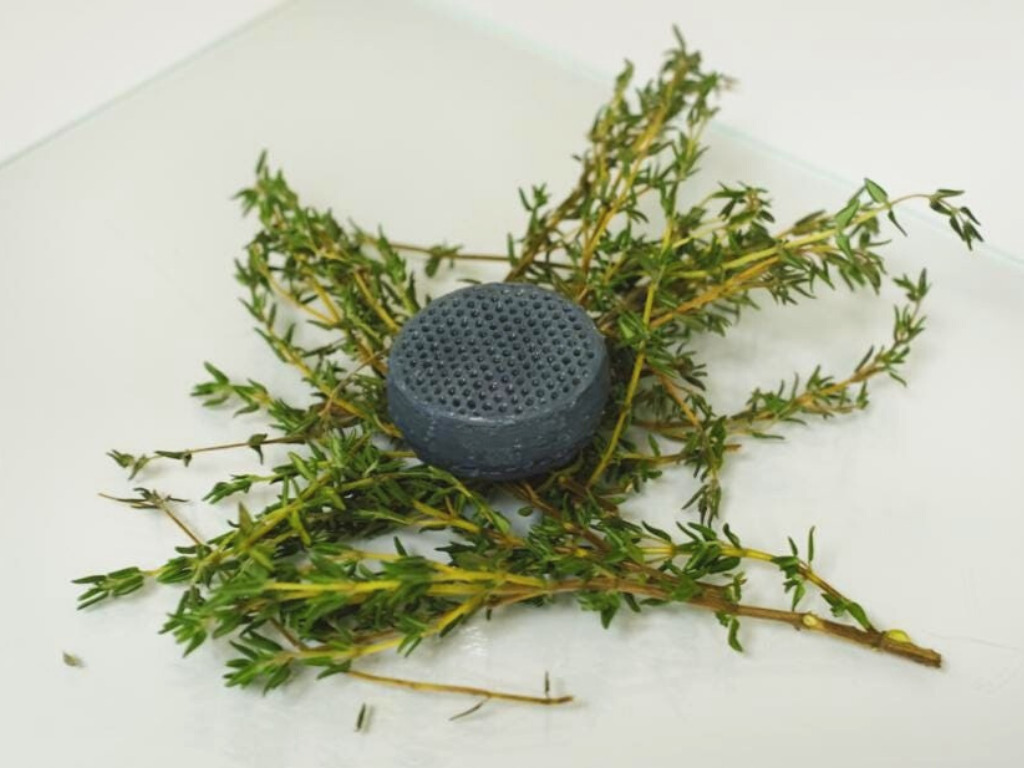3 Mins Read
Barcelona’s Novameat has released images of a blue steak. Not blue as in cooking preference, actually blue in colour. The bioengineering startup claims that it is the world’s first meat alternative to encapsulate all five kingdom classifications. Using its patented forming technology, the company produced a whole-cut hybrid steak with a blue hue.
Novameat has previously developed both vegan and cultivated meat analogues. Company CEO Guiseppe Scionti has referred to the 3D printing capabilities of Novemeat as a “complete gamechanger”. The addition of more ingredients has led to today’s super-hybrid recipe. Animal cells, plant-based derivatives, fungi, algae, and spirulina have been combined for what is yet to be confirmed as a potential publicity driver.

What’s in a colour?
Blue steak is unlikely to have been at the top of most people’s wish lists, yet here it is. “We chose the color with the purpose to create a futuristic-looking prototype,” Scionti said in a statement. “We wanted to show that there are no limits. With our technology, we are able to create whole cuts and hybrid alternative meat products with a variety of ingredients.”
The blue hue comes from spirulina, a blue-green algae frequently added to smoothies and protein bowls for its high protein and antioxidant content. This appears to be the first time it has been used to create a different colour meat. This development followed previous success within the 3D printed plant-based meat sphere. They led to an evolution of methodologies that left room for playful interpretations, such as the blue steak.
No nutritional or sustainability claims have been made about the prototype. There are not plans yet to commercialize the product.
Gearing up for experimentation
Back in 2019, Novameat successfully 3D-printed realistic vegan meat. With a fresh round of funding under its belt, it was confident about improving the sensory feel of its product. 2020 saw the unveiling of vegan steak 2.0, considered to be the most realistic substitute to date.
Then came the first cultivated success. Last January, Novemeat went on record to claim that it had created the world’s biggest cell-based meat prototype. The hybrid meat contained both animal and plant proteins and was 3D printed, just as the formerly vegan alternatives had been. The company cited maximum meat industry disruption as its motivation for embracing hybrid product lines. The patented micro-extrusion technique stayed the same.
With hybrid meats successfully developed, attention turned to more unusual, potentially more nutritious compositions. The blue steak was printed in five minutes but could easily be scaled up to create bigger cuts, according to Scionti. “Our technology is scalable at industrial-level, we have recently proven to be able to produce 1 ton per hour of either plant-based or hybrid whole cuts of meat with industrial food equipment,” he said in a statement.
Despite the novelty factor of blue steak, Novameat will continue to develop its plant-based whole cuts in the first instance. It was awarded a $2 million grant from the European Innovation Council Accelerator in December, to accelerate the launch of vegan whole-cuts in the market.

The competition heats up
Over in Israel, Redefine Meat has just announced the closing of a $135 million investment round. One of the largest to date within the country, it is viewed as a positive sign that plant-based printed meat alternatives are commercially viable. Redefine has already earmarked its cash injection for significant foreign market expansion, with restaurant partnerships being given priority. Its products are already served in 200 locations in Israel, plus more in the U.K., Netherlands, and Germany.
All images courtesy of Novameat.





